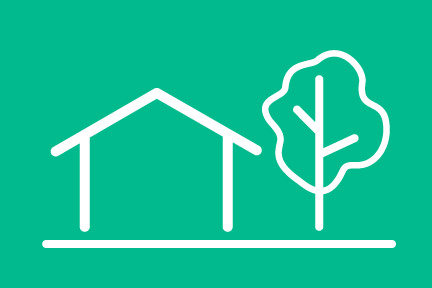Trees and Neighbors: Who is Responsible?

General Tree Ownership
Property owners are responsible for maintaining their own property, including any trees on the property. If you have a question about who is responsible for a tree, the location of the tree’s trunk will determine who owns the tree. If the trunk of the tree lies completely within the boundaries of your neighbor’s property, the tree is owned by your neighbor, and your neighbor is responsible for maintaining it. If the trunk is entirely on your property, you own it and can do with it as you please. But if the tree is located on the property line so that part of the trunk is on your property and part of the trunk is on your neighbor’s property, the tree is considered the property of both of you, you are both responsible for maintaining it, and it cannot be removed unless you both agree.
Branches and Roots
If branches from a tree owned by your neighbor hang over your property, you can trim the tree back to the property line. In most jurisdictions, you are not required to obtain permission from the neighbor to trim any part of a tree that crosses the boundary onto your property as long as you do not remove any portion of the tree that is on the neighbor’s property and you do not enter onto your neighbor’s property to perform the tree trimming work.
You have similar rights with tree roots – if the roots of the tree encroach onto your property, you have the legal right to remove the roots up to the property line. However, in some jurisdictions, you may be required to inform your neighbor that the tree’s branches or roots are encroaching on your property and provide them with the opportunity to correct the problem before you undertake the trimming work.
You have similar rights with tree roots – if the roots of the tree encroach onto your property, you have the legal right to remove the roots up to the property line. However, in some jurisdictions, you may be required to inform your neighbor that the tree’s branches or roots are encroaching on your property and provide them with the opportunity to correct the problem before you undertake the trimming work.
Damages
Use caution when trimming a neighbor’s tree branches or roots, because if the trimming impacts the trees overall health or causes it to die or fall over, you may be liable to your neighbor for damages, which, in some jurisdictions, can be up to three times the value of the tree. The law on this issue varies from state to state. If the trimming is substantial, consulting an arborist or hiring a tree trimming professional is your best bet to avoid causing significant damage. Before you begin any trimming work, you’ll also want to refer to legal boundary markers or obtain a copy of the property survey to identify the property line.
If a tree from your neighbor’s property falls on or causes damage to your property, your neighbor is generally only legally responsible for any damages if you can show that your neighbor failed to properly maintain the tree or knew that the tree was in a hazardous condition. If the damage resulted from a storm and there is no evidence that the tree was poorly maintained or that the property owner knew that the tree was in poor condition before the storm, it is likely that the property owner will not be held responsible for damage caused as a result of the tree.
If you have questions about issues involving trees and neighbors, you may want to consult with a local real estate attorney. To quickly find a real estate lawyer for you, quickly post a short summary of your legal issue on Legal Services Link for FREE and let a real estate attorney come to you!
Do You Need An Attorney?
If so, post a short summary of your legal needs to our site and let attorneys submit applications to fulfill those needs. No time wasted, no hassle, no confusion, no cost.

